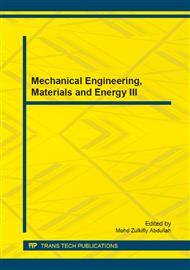p.186
p.194
p.199
p.203
p.208
p.214
p.219
p.223
p.229
Energy Consumption Modelling for Air-Cushion Vehicles
Abstract:
Air-cushion vehicles (ACVs) provide a solution to transportation on soft terrain, whereas they also bring a new problem of excessive energy consumption to be solved. The prerequisite for energy consumption optimization is its modelling and simplification with respect to vehicle independent operating parameters. In a scenario of steady-state longitudinal drive condition, by employing slip ratio and load distribution ratio as independent parameters, dependent parameters and energy consumption are inferred and finally expressed as functions of the independent parameters. The method and result can be taken reference by studies of energy consumption modelling for air-cushion vehicles in different structures and also extensively for common electric vehicles.
Info:
Periodical:
Pages:
208-213
Citation:
Online since:
December 2013
Authors:
Price:
Сopyright:
© 2014 Trans Tech Publications Ltd. All Rights Reserved
Share:
Citation:


